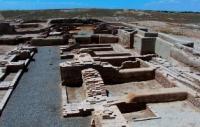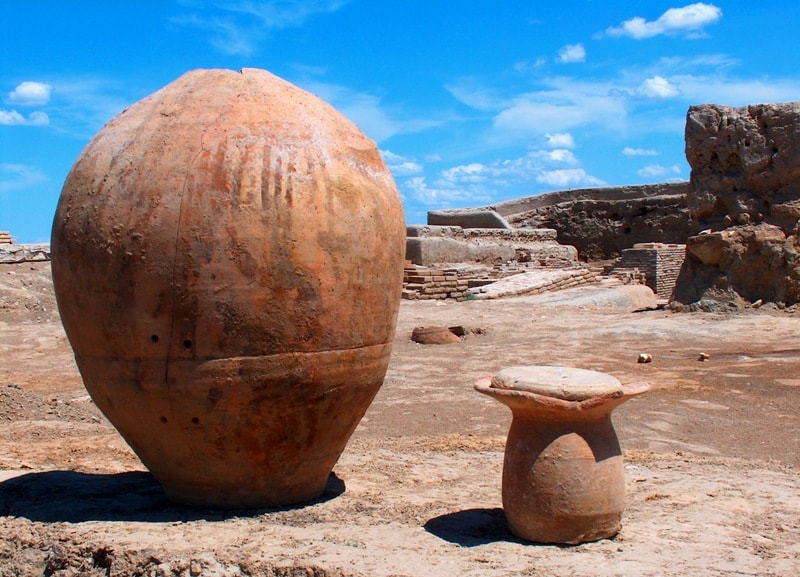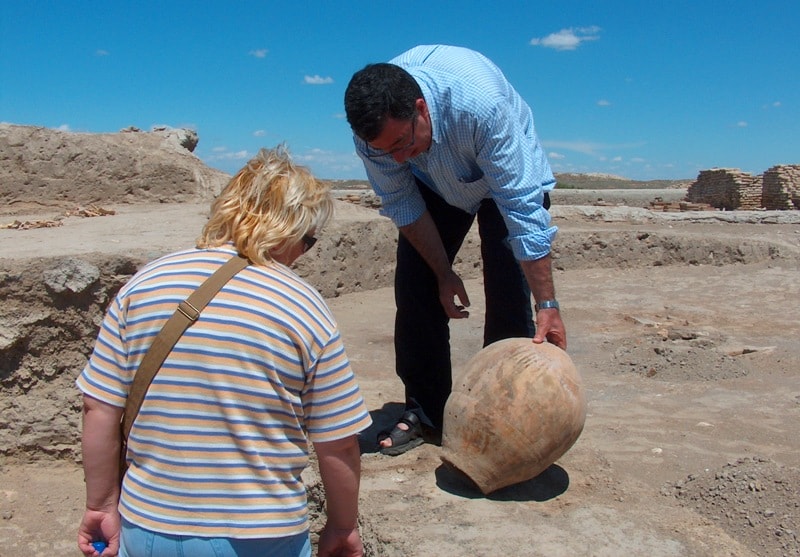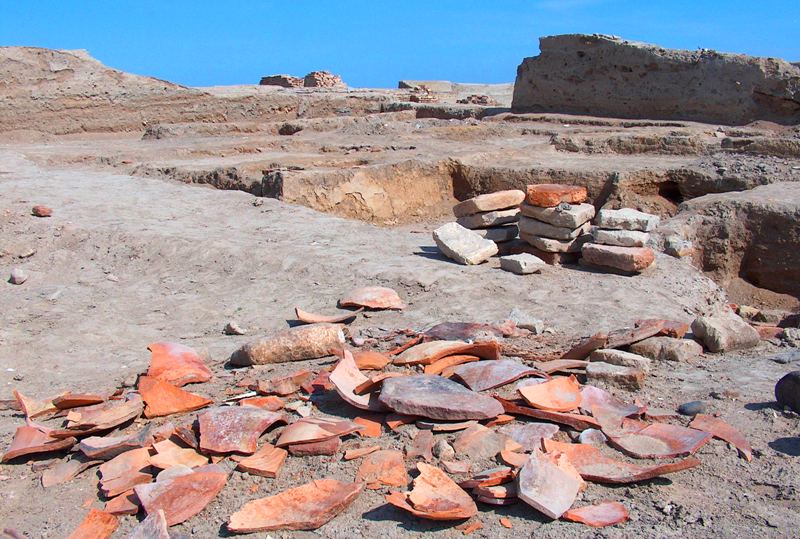Вы здесь
Otrar excavation.





Tours on ancient settlements of Kazakhstan.
"Also known as Kangu Tarban or Kangly in subsequent centuries, this tribe was able to retain control for a relatively long time by mingling with various Turkmen communities. Its influence only waned with the coming of Islam into Central Asia. It was during this period, from the Xth to XIIth centuries, that the city, then known as Otrar, reached its zenith as a centre of trade and manufacturing"
Excursion to ancient settlement Otrar.
Otrar is another city on the Silk Road which was located at the junction of various landscapes and crossroads of the caravan routes. As a center of trade and crafts it flourished in the X-XII. It is the native city of the great medieval philosopher Al-Farabi.
Ceramics from Otrar characterized by the purity of the glaze and preciseness of design deserves special attention. The mint place of Otrar was well-known. The ancient city of Otrar has had many names: Tarban, Turaband, Turar and Farab as well as Otrar.
It was the birthplace of the great scholar known as Al-Farabi (meaning "from Farab"), whose face smiled out from all original Kazakhstani banknotes (now all but disappeared as they are withdrawn from circulation). Otrar was among the most celebrated cities along the Silk Road during its golden era. It is thought that it was first founded as early as the IInd Century ВС, at the time of the Kang- yu confederation of states, located in the middle reaches of the Syr Darya.
Also known as Kangu Tarban or Kangly in subsequent centuries, this tribe was able to retain control for a relatively long time by mingling with various Turkmen communities. Its influence only waned with the coming of Islam into Central Asia. It was during this period, from the Xth to XIIth centuries, that the city, then known as Otrar, reached its zenith as a centre of trade and manufacturing.
It struck its own coins, and the city's library attracted scholars from all parts of Central Asia. In 1219, Otrar was the first city to fall victim to a horrifying campaign of revenge and conquest by Genghis Khan against the Central Asian oases.
The governor of Otrar, Gayir Khan. provoked this historical tragedy. Genghis Khan, strengthened by his successful campaign against China and his entry into Semirechye, where he had met no resistance, undertook the conquest of Central Asia by diplomatic means.
He equipped a large trade caravan and in the summer of 1218, the Mongol lord sent 500 pack camels loaded with precious merchandise and accompanied by 450 tradesmen to his neighbour of Khorezm. The Mongols carried out their task in the markets of Bukhara, Samarkand and Urgench.
They sold their loads, and gathered information on the region in the process. Loaded with barter goods, the camels, traders and drivers took the long road back home. They made it only to the border city of Otrar. There, accused of spying by Gayir Khan, all those who accompanied the caravan were executed - with the exception of one single driver who managed to escape and informed Genghis Khan about what had happened.
The Mongol lord immediately demanded the head of the governor from his neighbour, the Shah of Khorezm. The demand was not met, and the two envoys were reportedly put to death. In the event, this deliberate outrage was convenient for Genghis Khan, who put himself at the of a huge punitive expedition consisting of 150,000 warriors, and by September 1219 stood at the gates of Otrar.
The city was prepared for a long siege. Genghis Khan left behind 35,000 soldiers, commanded by his sons Chagatay and Ogedei, sent his son Zhu-Chi with a force to the lower reaches of the Syr Darya, and led the main army himself to Bukhara.
The Pearl of the Orient fell even before Otrar did, and by March 1220 the Mongols had conquered all of Mawernannahr, the land between the Amu Darya and the Syr Darya. Otrar held out for five full months, until the defence forces sent by the Shah and commanded by Karadzha Haddzhib surrendered.
The hapless governor was able to hold the citadel with his followers for another month before he was forced to surrender as well. The town fell in February 1220, when the Mongol hordes burst into its alleys, murdering, ransacking and setting property on fire.
The city, once so rich and beautiful, was left in utter ruin. However, Otrar did not take long to flourish once more - its conquerors soon recognized its strategic location and used it to their advantage. Today, at the city's excavation site numerous walls remain (though in poor condition), showing the layout of large parts of the city.
They clearly demonstrate that Otrar was built according to a coherent construction plan, based both on social order and hygienic principles, ft must be noted that this important site, though protected by the state, is still terribly at risk; not only do the goats that roam freely around the site contribute to its continuing degradation, but tourists (mostly unwittingly) do their bit to increase the ruination as well.
The fences leave much to be desired, and many tour guides cannot prevent their groups from venturing right through the unsecured grounds. Since 2001, UNESCO, together with a Japanese-funded group, has been engaged in improving the situation.
The intention to add the site to UNESCO's World Cultural Heritage list should provide the necessary means to protect it, but until then, please show restraint and proper respect for this archaeological treasure. To see vases and wall carpets found during the initial excavation of Otrar, you will have to visit the Presidential Cultural Centre in Astana.
Otrar is situated off the main roads of the modern world. In its halcyon days, it was ideally located in an oasis at the foot of a chain of hills, close to the point where the Arys flows into the Syr Darya. To get there, follow the road from Shymkent to Turkistan, turn left beyond Tortkol, cross the Tashkent-Orenburg-Moscow railway line and drive to the village of Shaulder.
Here, there is a museum dedicated to the history and archaeological works of Otrar. The actual excavation site is located some 20 kilometres to the north of Shaulder, beyond Kogam aul and 1.5 kilometres off the road. The road from Otrar to Shymkent through Arys and Badam provides many minor spots worth stopping to explore.
As in so many parts of South Kazakhstan, every aul has something special to offer: a mosque, group of barrows or the ruins of old settlements. The road leads along the Arys River and crosses it three times. In the town of Arys the track bends left towards the east. Some 20 kilometres further down, not far from where the Badam flows into the Arys near the aul of Karaspan, are the walls of a city that stood here in the IX-th and X-th centuries, as well as many barrows from various periods.
The eldest among them dates from the IVth Century ВС, the latest from the 1Xh Century AD. Six kilometres beyond Badam is the hamlet of Ordabasy, part of the protected area of historic and cultural monuments of the same name. It was here, early in the XVIII-th Century, that the Kazakhs united in their struggle against the invading Zhungars.



Authority:
The guidebook across Kazakhstan . Authors Dagmar Schreiber and Jeremy Tredinnick. Publishing house "Odyssey".2010.
Photos
Alexander Petrov.







